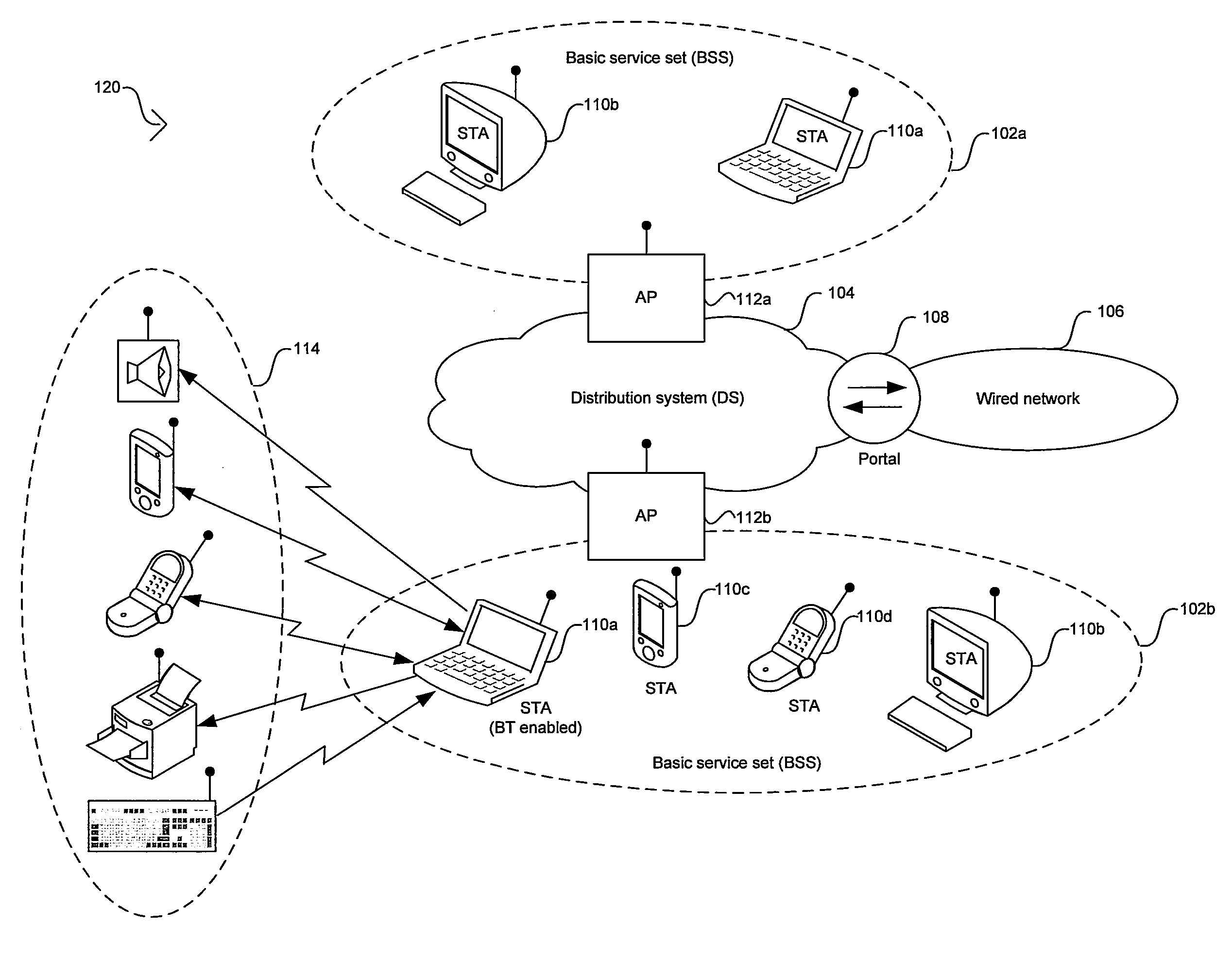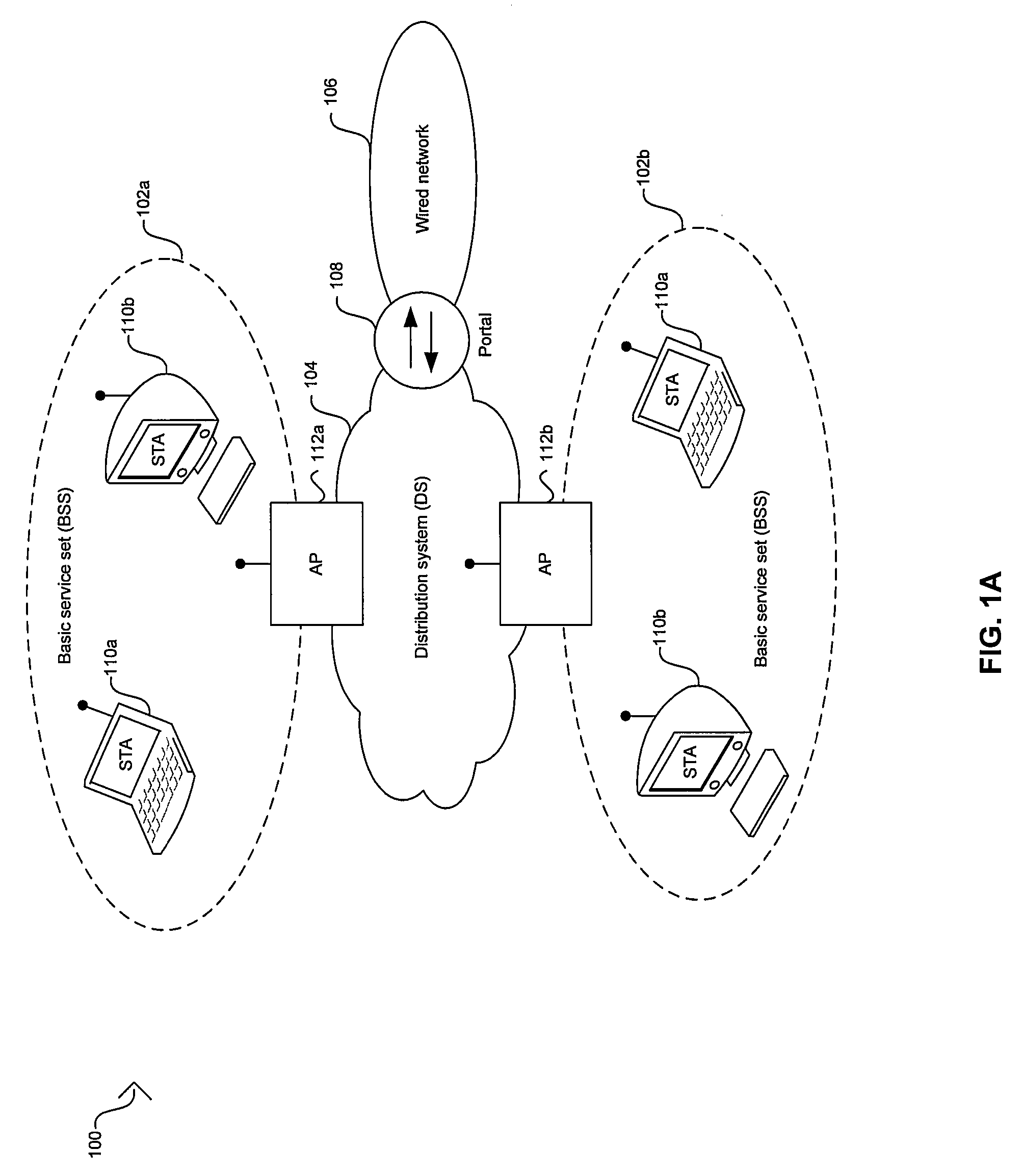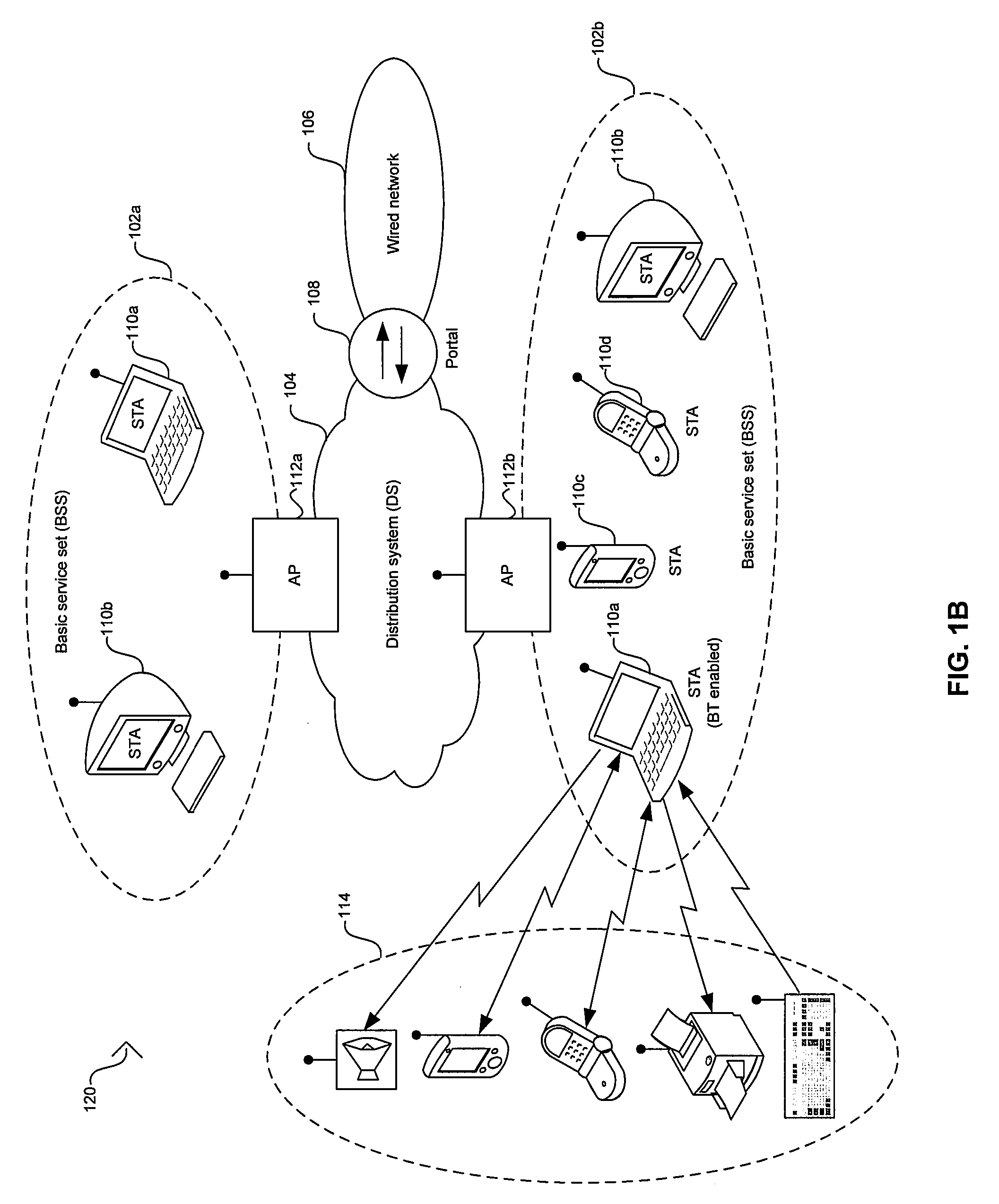Method and System for Bluetooth and Wireless LAN Coexistence
a wireless lan and coexistence technology, applied in the field of interference in wireless communication systems, can solve the problems of significant interference or blocking signals, two different types of interference effects, and significant interference between operating devices
- Summary
- Abstract
- Description
- Claims
- Application Information
AI Technical Summary
Benefits of technology
Problems solved by technology
Method used
Image
Examples
Embodiment Construction
[0029]Certain embodiments of the invention may be found in a method and apparatus for Bluetooth® and Wireless LAN coexistence. Various exemplary aspects of the invention may comprise controlling wireless local area network (WLAN) communication and Bluetooth® communication in a coexistence system that handles at least a WLAN communication protocol and a Bluetooth® communication protocol based on time division multiplexing (TDM) and adaptive frequency hopping (AFH). Communication may occur between the WLAN communication and the Bluetooth® communication based on the TDM and the AFH. In one embodiment of the invention, the switching may occur adaptively. Notwithstanding, in instances where it may be determined that AFH is disabled, switching to TDM may occur.
[0030]In accordance with an embodiment of the invention, WLAN communication and / or Bluetooth(® communication may be disabled based on a state of at the WLAN communication and / or the Bluetooth® communication. Use of the AFH may be en...
PUM
 Login to View More
Login to View More Abstract
Description
Claims
Application Information
 Login to View More
Login to View More - R&D
- Intellectual Property
- Life Sciences
- Materials
- Tech Scout
- Unparalleled Data Quality
- Higher Quality Content
- 60% Fewer Hallucinations
Browse by: Latest US Patents, China's latest patents, Technical Efficacy Thesaurus, Application Domain, Technology Topic, Popular Technical Reports.
© 2025 PatSnap. All rights reserved.Legal|Privacy policy|Modern Slavery Act Transparency Statement|Sitemap|About US| Contact US: help@patsnap.com



